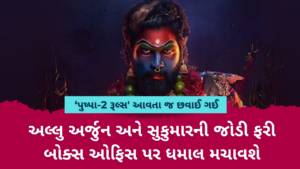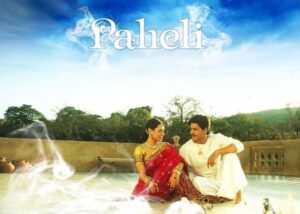The Good Road: The journey depicted in Gyan Correa’s The Good Road lacks in meaning, purpose and clarity, hence seeming suspect, as if Gyan brought in complications only to fill in the film’s runtime. A well intentioned but half realized effort.
Rating: ***
Director: Gyan Correa
Cast: Ajay Gehi, Sonali Kulkarni, Shamjibhai Kesaria, Priyank Upadhyaya, Keval Katrodia, Poonam Rajput, Rinkle Kaneria
Gyan Correa’s The Good Road, the Gujarati film made headlines (and still is) when selected by the Film Federation of India for the forthcoming Academy Awards over acclaimed, admired and commercially successful ventures such as Ritesh Batra’s epistolary drama The Lunch Box, Anand Gandhi’s titanic philosophical masterpiece The Ship of Theseus, Rakyesh Omprakash Mehra’s Bhaag Milkha Bhaag, a biopic on sprinter Jeev Milkha Singh, and Gauri Shinde’s delightful Sri Devi-starrer English Vinglish. Directors Anurag Kashyap and Ritesh Batra haven’t shied away from expressing their disappointment and derision over Film Federation’s decision of choosing a completely unknown regional film over The Lunch Box, an Irrfan Khan starrer which received a fifteen-minute standing ovation and an Audience Choice Award at Cannes film festival. My personal choice would’ve been The Ship of Theseus, which is even more original, personal and important a film than The Lunch Box, which in some ways was similar to the Clint Eastwood-Meryl Streep starrer Bridges of Madison County. Now with The Good Road attracting controversy after its submission, the film has managed to grab the eyeballs of directors, producers and people, especially Gujaratis.
The film, set in the backdrop of Rann of Kutch in Gujarat, has been decimated by Gujarati critics (Gujarati critic Mr. Shishir Ramavat’s review can be read here: http://shishir- ramavat.blogspot.in/search/label/The%20Good%20Road) and locals for a variety of reasons – most of the cast-members include non-Gujarati actors and non-actors with unconvincing accents (it’s always about the accents; not everybody can be a Streep or Gary Oldman) and static delivery, and worst of all, the film suggests existence of brothels on road-sides which employ young underage girls, who use coarse and colorful language openly (a shocker
for most prudes and hypocrites who curse like sailors – or even better, Surti locals – but wince at hearing profanities in movies). If someone were to ask me if I would like to visit Kutch after watching this film, I’d shake my head, not because of the brothels or the bad language, but because the film depicts the locals as apathetic, untrustworthy, unresponsive and charmless people. They take the wrong step each time for inexplicable reasons, or perhaps only to further the plot to its ninety minute runtime. And this leads to quite a few punctures and derails which unravel all the shortcomings of a debut venture. It is interesting to note that Anand Gandhi, Ritesh Batra and Gauri Shinde are debut feature-film directors themselves. In comparison, one feels Gyan Correa is a student who has directed a movie as a part of a final year project at a prestigious Indian film institute.
Amitabha Singh, the film’s cinematographer frequently uses extremely long shots even during some of the master shots, some with the sole purpose of capturing the arid beauty of Kutch, a region known as ‘white desert’, and others to symbolize or underscore the characters’ state of mind. There is a familiar shot of village women carrying matkas, another in which the hot sand seems to heat up the screen itself. A beautiful moment is when Sonali Kulkarni’s character is lying unconscious in the middle of the desert, her face partially covered in white sand, and a group of women in traditional wear and mighty nose rings enter the scene. Firstly, we only see their shadows at a distance. Then they come into picture, we see them along with their husbands carrying a cart like the most unlikely guardian angels you’d get to see. The women surround Kulkarni, and the camera pans rights at their faces and then back at Kulkarni’s helpless form. She is then rescued by them in the cart; unfortunately, since none knew how to drive the car Sonali’s character brought along, the poor vehicle remained stranded. Now, this scene could’ve further developed into Sonali’s character interacting with those villagers and learning something on the way back to her husband. Correa however squanders this opportunity, and in the next scene, we find Sonali back with her husband, and the helpful villagers totally get out of the picture. Even films such as Eat Pray and Love, The Best Exotic Marigold Hotel, and our desi Swades have done a better job in capturing the relationship between the protagonists and the place they’re in.
Psychological developments of characters with great potential to enrich the narrative have been left uncovered. Hear this plot and think of all the possibilities that could be achieved in character development: There are three interwoven stories. One involves a poor truck-driver named Pappu (Kesaria) who fakes his death so his family would get the benefit of his life insurance policy. There is only one scene to ‘cover’ this angle. He stops at a roadside dhaba, along with his companion, a much younger temperamental Shaukat (Upadhyaya). The two see a boy curiously looking at their truck. They ask him what his name is. He replies “Aditya”. His parents, thinking he’s asleep in the back of their car, have left without him. When the parents – David (Gehi) and Kiran Shroff (Kulkarni), realize their blunder, they reach the police station and a hunt for Aditya (Katrodia) begins. The complication here is that Pappu, under the coercion of dhaba-owner (who plans everything for his fake death), takes Aditya in his along to drop him to his parents. This is the film’s second story. The third involves a eleven-year old orphan named Poonam (Rajput) who wants to reach her grandmother in Athangrasa but is dropped off at an unknown place. She finds a couple of girls her age playing at Topaz, a small establishment nearby that seemingly looks like a garment dying unit. She is asked by the owner to leave; ‘The place is not for you’ he says. She chooses to remain temporarily, and befriends Rinkle, a supportive thirteen or so girl who lives there. It is later that she learns that Rinkle’s (Rinkle) a child prostitute working along with all the other young girls for the owner, a dalal/pimp. There is barbed wire to separate the
outside world from the girls, and each female stands behind the open doors, all decked up like a Barbie, waiting to be picked.
I dismiss the accusations made by some that ‘the film does no justice to its themes’. Like a Satyajit Ray film, loss of innocence is seen in different ways in The Good Road. Aditya loses the privileges of a pampered young kid, and his clothes become frayed and shabby while riding in Pappu’s truck. He innocently asks what ‘bho****c**d’ means, on hearing Shaukat use the word repeatedly. He eats the same food eaten by Pappu and Shaukat, who are from a lower class background. This theme is however covered more extensively in the case of Poonam, who finds girls her age abusing and physically assaulting each other and men leering at her and at Rinkle. This theme is hardly explored, though; B.A. Pass, a film on male prostitution released this year gave a far better, more hard-hitting treatment to this theme. Characters hardly speak here, except for humdrum interactions too ordinary to carry any weight or profundity. Aditya could’ve been introduced to alcohol (common among truck-drivers). A scene could’ve taken place between Poonam and a customer. We could’ve learnt more about the reasons behind Pappu’s fake death. There could’ve been a drift between David and Kiran after Aditya’s disappearance. The Good Road could’ve attained the complexity of a Satyajit Ray film and made its journey a spiritual one. Instead, it picks the safest possible, least memorable route.
The actors, especially the non-Gujaratis, flounder in evoking a strong emotional response. Ajay Gehi has never worked in a Gujarati film before and learned the Gujarati accent for over two months to get it right. He doesn’t, and this leads to a weak and unconvincing performance thoroughly lacking in confidence. Sonali doesn’t fare better either, but Gyan should be equally blamed for giving these two actors threadbare characters; yes, they search for a child, and there’s no metaphorical search to make their characters worthwhile. Shamjibhai Kesaria, playing Pappu, is slightly better, especially in one scene where he simply has to smile looking at Aditya. But some of his dialogue delivery is so flat you think he’s been attached to the machine used by Stephen Hawking. The child actors do alright, but I’ve seen more memorable kids. Many of the extras simply stink though. One police-officer wimp-slaps a guy, like he’s dusting off something on the guy’s cheek. Correa has to learn a lot about using non-actors. If they can’t act, it’s entirely his responsibility to a) make them act in the right way or b) shoot or edit the scene in a manner that helps in creating the required effect, which can’t be obtained from inexperienced non-actors. He does neither, and his work suffers.
This movie has only realized 60% of its potential. A movie like The Ship of Theseus gave its 200% and explored such a vast array of philosophical, theological and spiritual themes. A movie like The Lunch Box charmed everybody with its lovely story. A movie like English Vinglish drew our attention towards homemakers who could be great entrepreneurs too. Even Bhaag Milkha Bhaag could entertain us throughout its lengthy three hour runtime. One glance at some of the hyperlink films made already (films where different, unconnected stories slowly converge due to certain circumstances) – Altman’s legendary Nashville, Tarantino’s iconic Pulp Fiction, Kieslowski’s fabulous The Three Colors Trilogy, Paul Thomas Anderson’s mammothian Magnolia, the Brazilian classic City of God, the Best Picture Oscar winner Crash or the poignant Mumbai Meri Jaan – will be enough to predict The Good Road’s chance at getting an Oscar nomination. Film Federation of India has chosen the road always travelled by, and alas that will make no difference.
The Good Road Collector’s Edition DVD is available in stores such as Crossroad for Rs. 199. Extra Features includes… nothing except trailers of movies such as Mirch Masala, Jaane Bhi Do Yaaro, Dance of the Wind etc
DVD Rating Guide:
* – Totally Not Worth The Buy! Cheated!!
** – Not Really Worth Spending Your Money.
*** – Somewhat Good…
**** – I’m Glad I Bought It!
***** – Totally Worth The Buy! Gonna Wait for the Imperial Edition To Come!






[…] Film Starring Sonali Kukarni which is India‘s official submission for the 2014 Oscars, here: http://ourvadodara.in/good-road-dvd-review. This Review has been written as part of […]